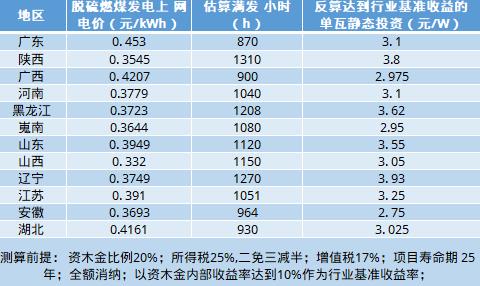
On May 22, the long-awaited Notice on Publishing the First Batch of Wind and Photovoltaic Power Parity Projects in 2019 (hereinafter referred to as the Notice) was officially released by the photovoltaic industry. Among them, there are 168 photovoltaic projects with installed capacity of 14.78 million kilowatts. The announcement of "Notice" indicates the formal arrival of the era of photovoltaic affordable access to the Internet in China.
After sorting out and analyzing, the National Development Energy Research Institute and Green Energy think tank found that the profitability of most of the affordable online projects would not be ideal. Under such conditions, investment enterprises should strive to broaden the profit channels and walk on multiple legs. At the same time, affordable online access will force photovoltaic enterprises to further improve their quality and efficiency.
The profitability of affordable Internet access projects is limited
Before analysing the development trend of photovoltaic industry, the economic indicators of photovoltaic parity access to the Internet are briefly analyzed. According to reports, the investment cost of photovoltaic system will be further reduced in 2019. Tao Ye, deputy director of the Renewable Energy Development Center of the Energy Research Institute of the National Development and Reform Commission, predicted at the seminar on technical scheme reliability and economic analysis of the photovoltaic affordable grid-connected project on April 18 that "some projects can reach the level of 3.5-3.6 yuan/W".
According to the agency's calculation, the National Institute of Energy Development and the Green Energy Think Tank sorted out the benefits of the provincial photovoltaic affordable access projects in the Notice as follows:

Combining with the above table, we can find that only Liaoning, Heilongjiang and Shaanxi can theoretically rely on photovoltaic power plants themselves to meet the needs of internal rate of return in the areas applying for parity access projects in the Notice. These projects account for about 33% of the total projects, and 67% of the projects still fail to achieve the desired internal rate of return.
It should be noted that the above data are based on the project life span of 25 years, and the "Notice" points out that "photovoltaic power generation parity grid-connected project units sign long-term fixed price purchase and sale contracts (not less than 20 years)", in addition, "3.5-3.6 yuan/W level" is only for "some areas". Therefore, the profitability of photovoltaic parity online projects may be more severe than the above data.
Through the above analysis, we can see that the internal rate of return of most projects may not achieve the desired effect. Shi Jingli, a researcher at the Energy Research Institute of the National Development and Reform Commission, predicted that "at present, there are limited photovoltaic power generation projects with full access to the Internet without any subsidy conditions".
Impact of Priority of Par-price Photovoltaic Projects on the Industry
For owners, the relationship between parity and bidding should be carefully weighed. The yield of parity is low, and bidding may not be able to implement the absorption and land, resulting in the final failure to declare the project. On January 7, 2019, the Notice of the State Energy Administration of the National Development and Reform Commission on Actively Promoting the Work of Wind and Photovoltaic Power Generation on the Non-Subsidized Fair-Priced Access to the Internet (hereinafter referred to as the Notice of Promoting Fair-Priced Access to the Internet) put forward two priorities for the project of photovoltaic Fair-Priority Power Generation and Full-guarante“ Priority to the use of state-owned unused land, in short, requires priority to ensure the absorption of land resources. Absorption and land resources are also prerequisites for bidding project declaration. Therefore, the National Development Energy Research Institute and the Green Energy Think Tank believe that the affordable photovoltaic project will have a certain impact on future bidding projects.
Absorption capacity and land resources are becoming scarcer and scarcer. It is necessary to ensure that the limited resources can be used effectively. According to reports, the second batch of "pioneers" plan has completed all base bidding by the end of October 2016, but up to now, there are still 1.2GW projects still not connected to the grid, which is not only a waste of resources, but also harmful to other compliance enterprises willing to build photovoltaic power plants. This situation should be avoided as far as possible in affordable photovoltaic projects, although the Notice of Promoting Fair-Priced Access to the Internet clearly states that "for wind and photovoltaic power projects that have not started and completed construction within the prescribed time limit, the project approval (filing) organ should timely clean up and abolish them, so as to provide affordable access to the Internet and low-priced access to the Internet." It is hoped that the relevant rules will be promulgated as soon as possible to ensure the orderly implementation of the photovoltaic affordable Internet access project.
However, the withdrawal mechanism is only a measure to make up for the loss. If it can fundamentally reduce the phenomenon of not fulfilling the project construction as promised, it will be more conducive to the development of the industry. For example, in the "Notice on the Requirements of Wind and Photovoltaic Power Construction Management in 2019 (Draft for Opinions)" published on April 12, 2019, there is a description that "the project units that have not fulfilled their commitments will adopt disciplinary measures such as incorporating into the credit platform, canceling the qualification of participating in the competitive allocation". The National Development Energy Research Institute and Greenery think tank suggest that similar regulations can be introduced for photovoltaic affordable Internet access projects to increase the cost of corporate dishonesty, so as to ensure that the applied projects can truly land and the limited resources can be fully utilized.